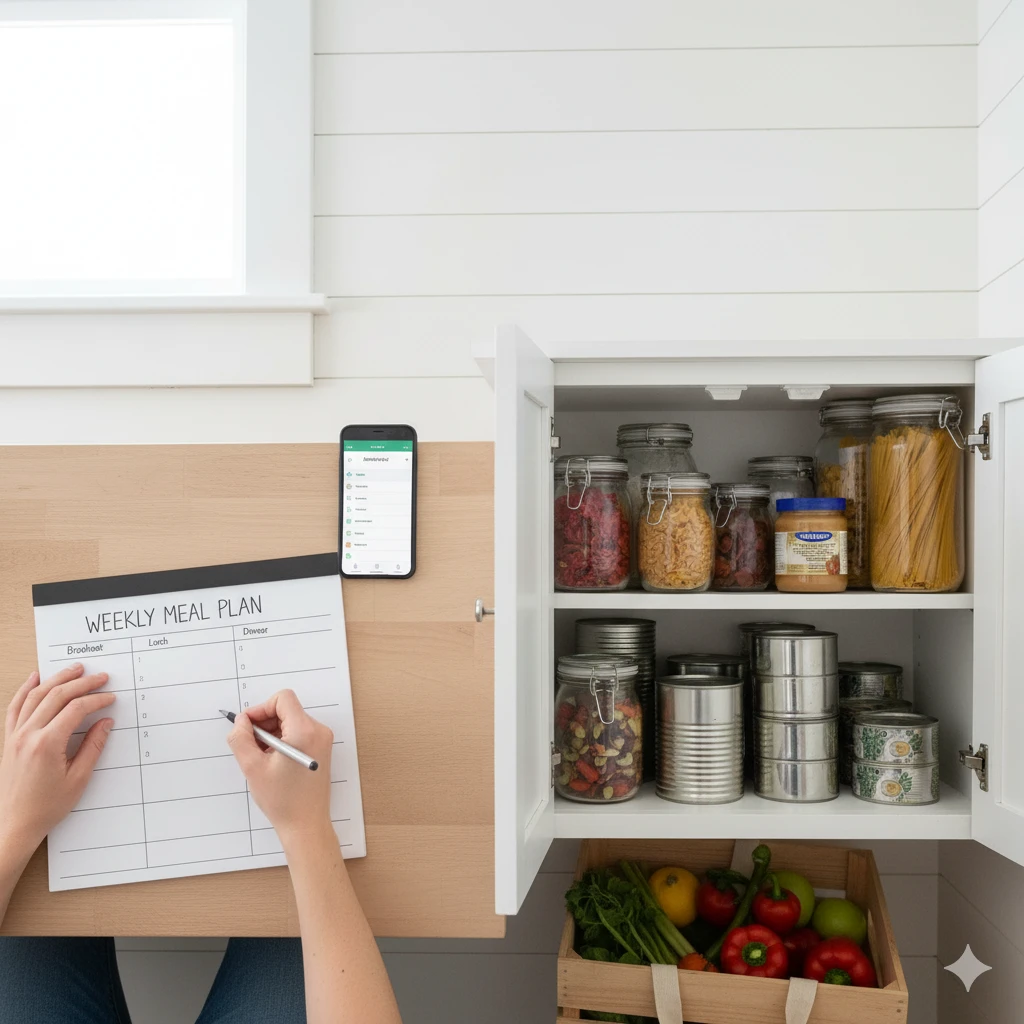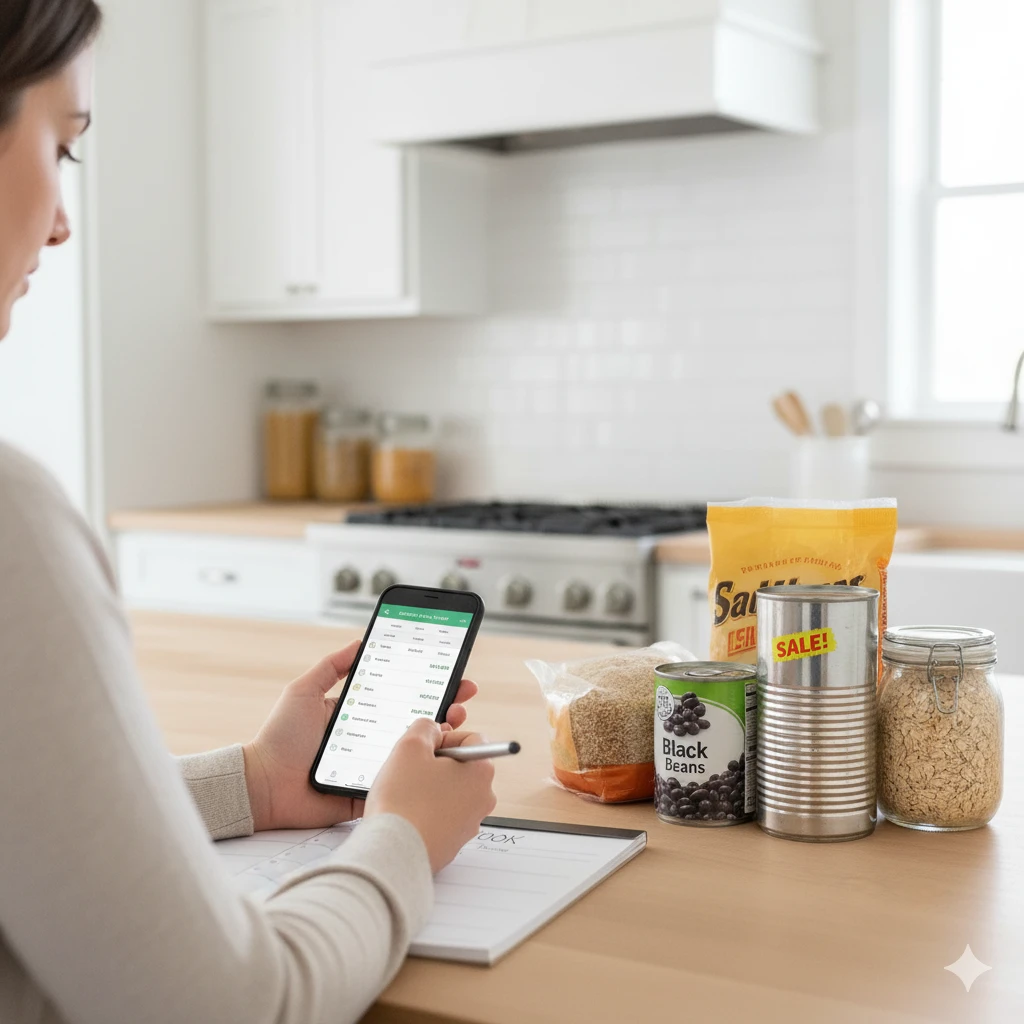Smart Grocery Shopping Hacks That Cut Your Food Bill in Half
Grocery shopping can feel like watching money disappear in real time. Week after week, the bill climbs higher—even when your cart doesn’t look that full.
But here’s the good news: you don’t need to accept grocery inflation as your fate. With a few smart grocery shopping hacks, you can trim your food budget dramatically while still feeding your family well.
According to USDA data, the average American family of four spends between $900 and $1,300 per month on groceries. That’s more than many families spend on housing or transportation. But research also shows that with smarter shopping strategies, families can save 30–50% of that cost without sacrificing quality or nutrition.
Think about it: cutting even 25% from a $1,200 grocery bill saves $300 a month—that’s $3,600 a year. That’s a vacation fund, a debt payment, or a bigger cushion in your savings account.
This guide will walk you through proven smart grocery shopping hacks that save money on groceries, avoid waste, and make shopping stress-free.
Why Smart Grocery Shopping Matters
Smart grocery shopping hacks aren’t just about clipping coupons or chasing sales—they’re about building habits that help you stay mindful of how you shop and spend. Most overspending happens because we enter the store without a plan, fall for marketing tricks, or let food go to waste once we get home.
A Nielsen report found that shoppers who go in without a list spend up to 30% more. That’s like handing over free money.
I learned this the hard way. One winter, I went shopping without checking my pantry and came home with three jars of peanut butter—already had two on the shelf. Since then, pantry checks and meal planning have become key frugal grocery tips in my home.
Smart grocery shopping isn’t just about thrift. It’s also about eating better, wasting less, and creating room in your budget for the things that really matter.
Step 1: Plan Before You Shop — Smart Grocery Shopping Starts Here
Walking into the store without a plan is like heading into battle without armor. The first step in grocery shopping on a budget is knowing exactly what you need and what you already have.
- Meal plan for the week: Choose 3–4 main dishes and overlap ingredients.
- Check your pantry: Avoid duplicates. No one needs five bottles of ketchup.
- Write a focused list: Stick to it. No “just in case” extras.
👉 If meal planning feels overwhelming, check out my post: Beginner’s Guide to Freezer Meals That Save Time and Money. Freezer prep saves both money and stress.

Real-Life Example: After I started scanning my shelves before heading out, I cut an average of $40 per month just by avoiding duplicates. That’s nearly $500 a year in savings—without clipping a single coupon.
Step 2: Master the Art of Sales and Discounts
Not every sale is worth chasing, but learning how sales cycles work is one of the most practical frugal grocery tips.
- Stock up on true staples: Rice, beans, pasta, canned tomatoes.
- Use digital coupons: Many stores let you stack app coupons with weekly deals.
- Know the cycle: Most items go on sale every 6–8 weeks.
💡 Pro Tip: Keep a small “price book” on your phone. Jot down the lowest price you’ve paid for eggs, milk, or meat. When you see that price again, you’ll know it’s time to buy extra.
According to Exposure to Grocery Prices and Inflation Expectations published by the University of Chicago, shoppers adapt their buying habits based on price trends—meaning tracking grocery price cycles can help you save money on groceries (journals.uchicago.edu).

Personal Story: I started recording chicken prices in my notes app. Once I realized the store discounted them every six weeks, I began buying two packs during the sale. That one change cut about $30 a month from my grocery bill.
Step 3: Shop the Store Smarter and Save Money on Groceries
Grocery stores are designed to make you spend more. Knowing how to navigate them gives you the upper hand.
- Shop the perimeter: Fresh produce, dairy, and meats are usually found here.
- Compare unit prices: Bigger isn’t always cheaper—check the per-ounce cost.
- Look high and low: Eye-level shelves are prime spots for pricey brands.
👉 For more everyday savings that stretch beyond groceries, see 9 Frugal Living Hacks to Save $100 Every Month.
Example: Last week I found two versions of oats. The “value size” box was actually 2¢ per ounce more expensive than the medium box. Smart grocery shopping hacks like this can prevent overspending every week.

Step 4: Embrace Store Brands
Store brands have come a long way, and switching can be one of the easiest smart grocery shopping hacks to cut costs. A 2024 consumer survey found that 75% of U.S. shoppers now buy more store brands because of inflation.
- Store brands often cost 20–30% less than name brands.
- For basics like flour, sugar, or cereal, the taste difference is negligible.
- The savings over a year can add up to hundreds of dollars.
💡 My switch: I replaced my favorite name-brand cereal with the store version. Savings? About $180 a year—with no noticeable difference.
Even outlets like Consumer Reports found that in blind taste tests, most store-brand staples matched or outperformed name brands—while costing significantly less.
Step 5: Shop Seasonally and Locally — A Core Smart Grocery Shopping Hack
Buying out-of-season produce is like paying for shipping you don’t see. Strawberries in winter? You’re basically paying extra for flavorless cardboard. 😂
Here’s how to save instead:
- Buy in season: Squash in fall, berries in summer.
- Visit farmers’ markets: Prices often drop near closing time.
- Preserve extras: Freeze berries or chop vegetables for later.
Quick Tip: I bought a flat of strawberries in June and froze half. By December, I was still making smoothies with sweet summer fruit at half the winter price.

For more meal-stretching strategies, see Can You Really Feed a Family on $50 a Week?.
Step 6: Reduce Food Waste with Smart Grocery Shopping Habits
The USDA estimates that American households waste about 30% of the food they buy—equal to $1,800 a year for a family of four.
To reduce food waste:
- Store properly: Airtight containers and freezer bags extend shelf life.
- Cook once, eat twice: Roast chicken one night, soup the next.
- Get creative: Stale bread = croutons, veggie scraps = broth.
Personal Strategy: I started saving onion and carrot peels in a freezer bag. After two weeks, I had enough to simmer into homemade broth. Free, flavorful, and zero waste.

Reducing food waste is one of the smartest grocery shopping hacks for anyone who wants to save money on groceries without cutting quality.
Bonus Strategies for Bigger Savings
Sometimes, the biggest savings come from thinking outside the supermarket:
- Ethnic markets: Often cheaper for rice, spices, and specialty items.
- Discount grocers: Stores like Aldi or Lidl offer basics at 20–40% less.
- Bulk buying (smartly): Great for pantry staples—but only if you’ll use them.
- Cash-only envelope system: Paying with cash keeps you accountable.
👉 If you’re balancing groceries with other money goals, you’ll also like The Frugal Home: DIY Fixes and Upgrades That Save You Money.
Real-Life Case Study
Six months ago, I tested these smart grocery shopping hacks in my own home. I tracked every receipt, compared monthly totals, and noted which strategies truly helped save money on groceries.
- Before: Our family of three spent around $780 a month on groceries, and I often felt like we were wasting food.
- After: By meal planning, tracking sales cycles, switching to store brands, and cutting food waste, we averaged $580 a month.
That’s a steady $200 saved every month—$2,400 a year. More importantly, we ate just as well, wasted less, and felt more confident about grocery shopping on a budget.
Conclusion & Challenge
Grocery shopping doesn’t have to drain your wallet—or your sanity. With these smart grocery shopping hacks and frugal grocery tips, you can save money on groceries while enjoying better meals.
Your Challenge: This week, try one new habit. Use one of these smart grocery shopping hacks to plan, shop, or store smarter. Track your receipts and compare next week.
Over time, you’ll see how simple changes—planning, tracking, and reducing food waste—can completely transform your grocery spending and your lifestyle.






